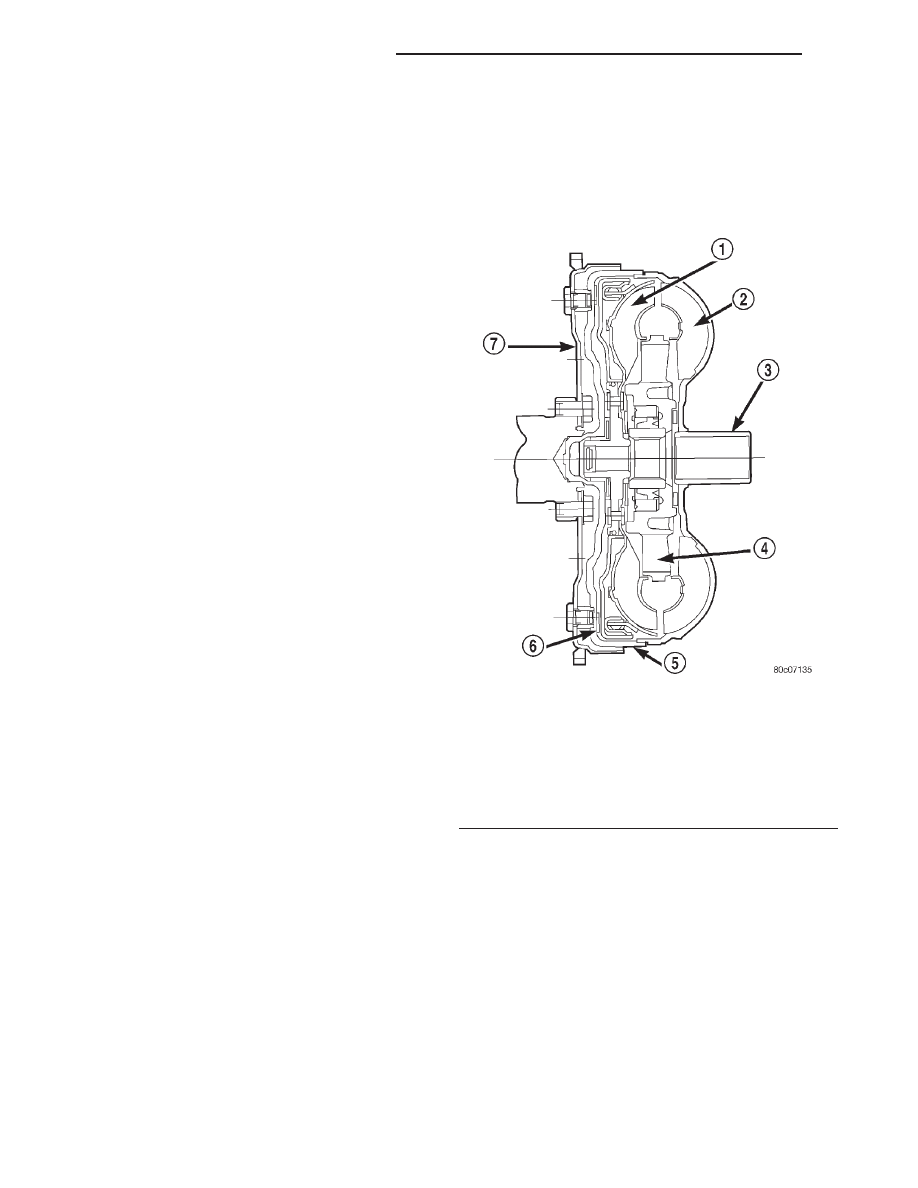Dodge Durango (DN). Manual - part 76

Exceptions to this policy are the use of special dyes
to aid in detecting fluid leaks.
Various “special” additives and supplements exist
that claim to improve shift feel and/or quality. These
additives and others also claim to improve converter
clutch operation and inhibit overheating, oxidation,
varnish, and sludge. These claims have not been sup-
ported to the satisfaction of DaimlerChrysler and
these additives must not be used. The use of trans-
mission “sealers” should also be avoided, since they
may adversely affect the integrity of transmission
seals.
OPERATION
The automatic transmission fluid is selected based
upon several qualities. The fluid must provide a high
level of protection for the internal components by
providing a lubricating film between adjacent metal
components. The fluid must also be thermally stable
so that it can maintain a consistent viscosity through
a large temperature range. If the viscosity stays con-
stant through the temperature range of operation,
transmission operation and shift feel will remain con-
sistent. Transmission fluid must also be a good con-
ductor of heat. The fluid must absorb heat from the
internal transmission components and transfer that
heat to the transmission case.
TORQUE CONVERTER
DESCRIPTION
The torque converter (Fig. 9) is a hydraulic device
that couples the engine crankshaft to the transmis-
sion. The torque converter consists of an outer shell
with an internal turbine, a stator, an overrunning
clutch, an impeller and an electronically applied con-
verter clutch. The converter clutch provides reduced
engine
speed
and
greater
fuel
economy
when
engaged. Clutch engagement also provides reduced
transmission
fluid
temperatures.
The
converter
clutch engages in third gear. The torque converter
hub drives the transmission oil (fluid) pump.
The torque converter is a sealed, welded unit that
is not repairable and is serviced as an assembly.
CAUTION: The torque converter must be replaced if
a transmission failure resulted in large amounts of
metal or fiber contamination in the fluid. If the fluid
is contaminated, flush the fluid cooler and lines.
Fig. 9 Torque Converter Assembly
1 – TURBINE
2 – IMPELLER
3 – HUB
4 – STATOR
5 – FRONT COVER
6 – CONVERTER CLUTCH DISC
7 – DRIVE PLATE
21 - 170
46RE AUTOMATIC TRANSMISSION
DN
DESCRIPTION AND OPERATION (Continued)